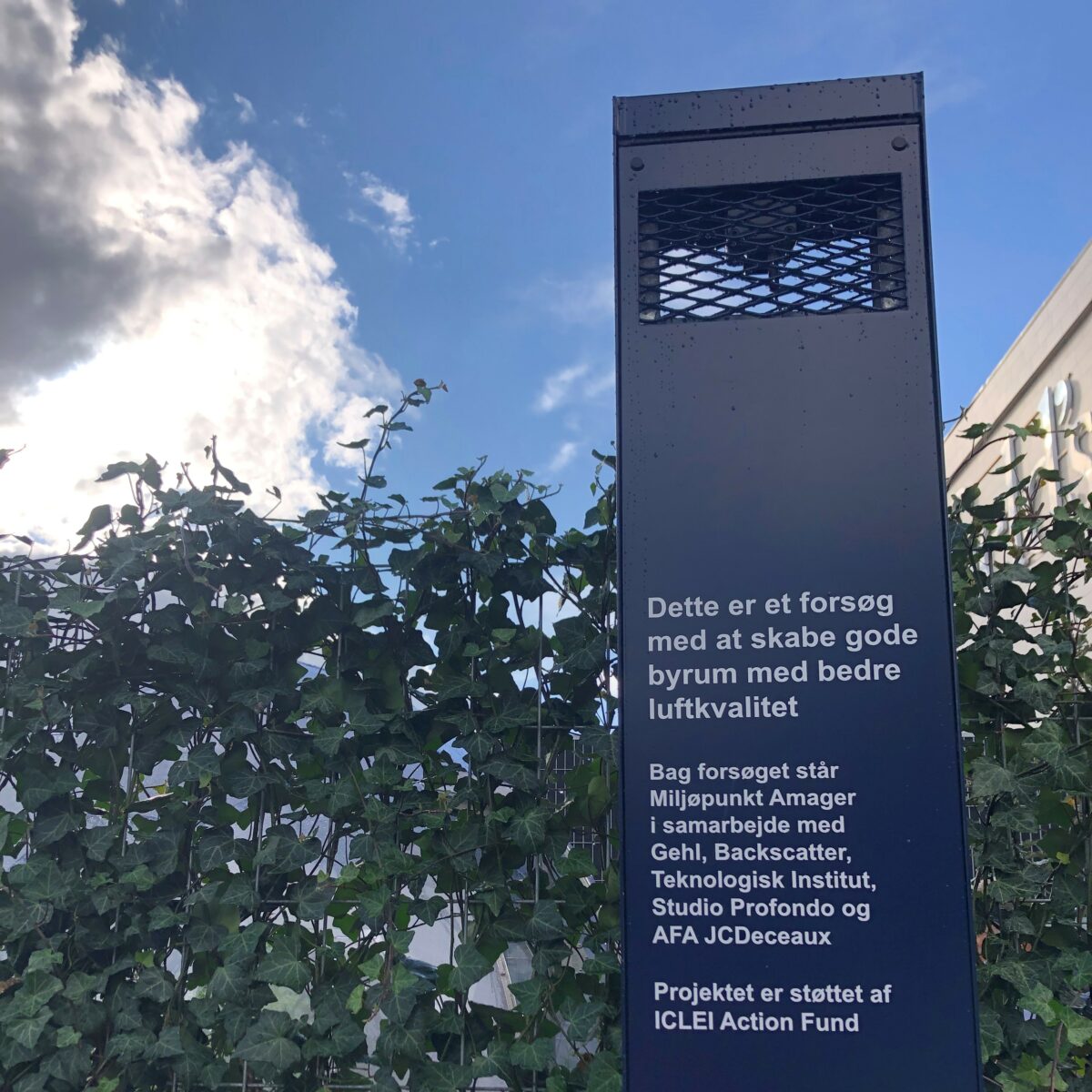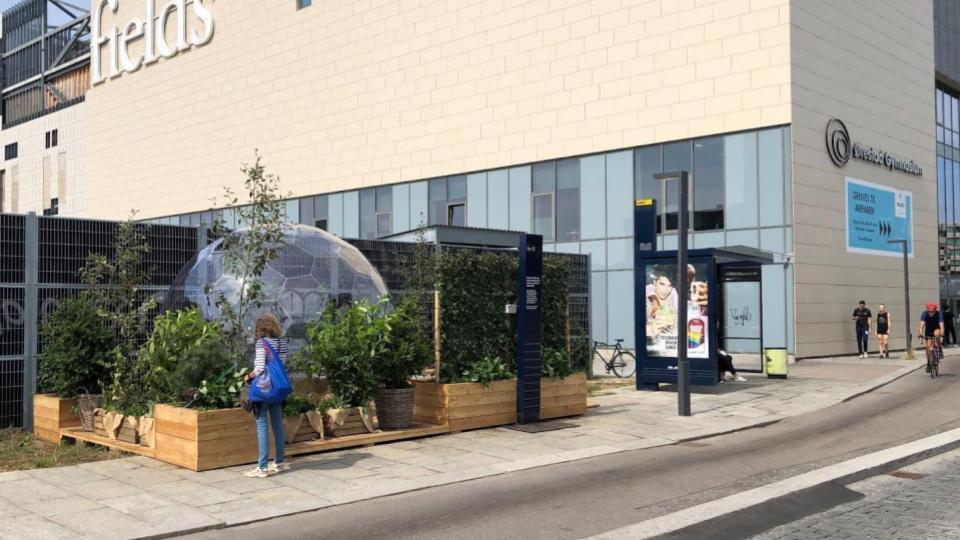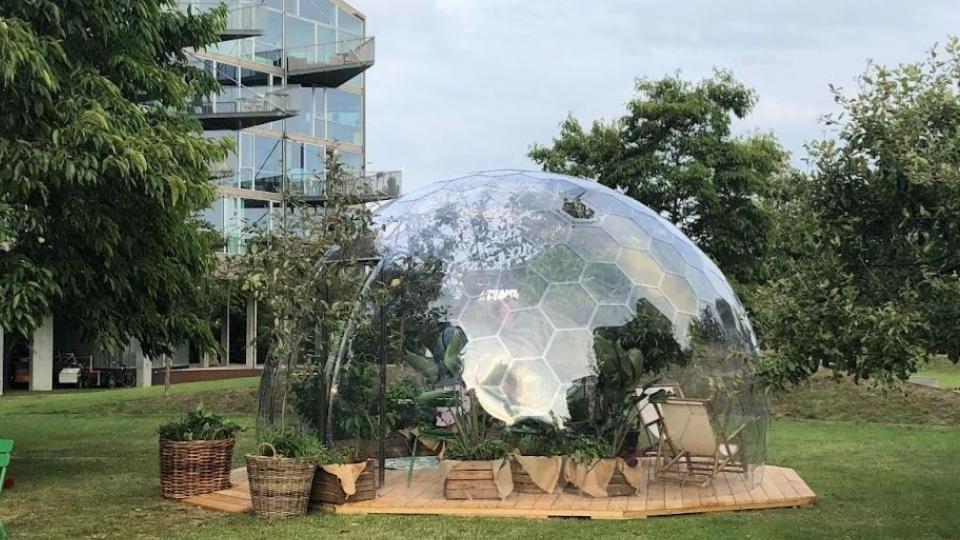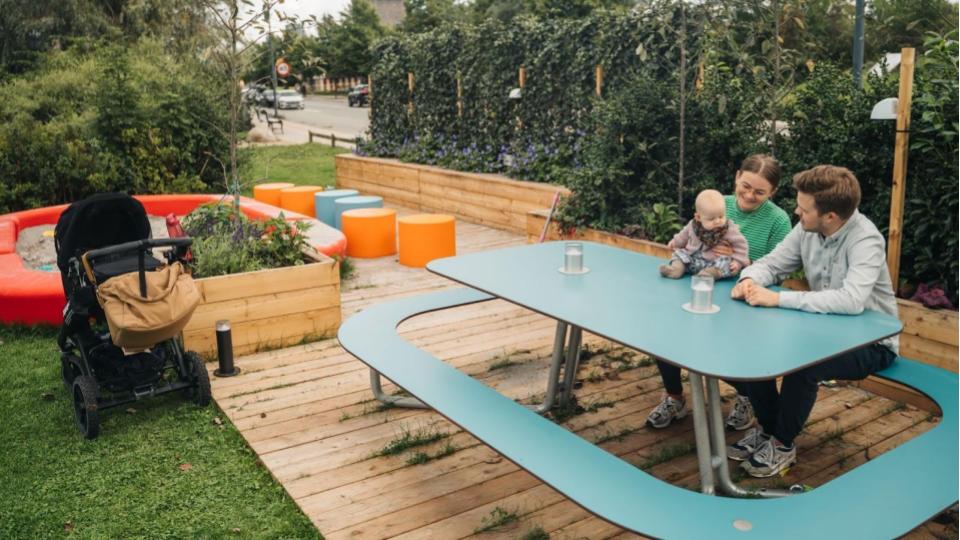Over the course of the implementation period, Danish Technological Institute has conducted air quaility measurements in the areas of the three pilots. Sensors were installed outside the pilots to measure the quality of the air in the close proximity and inside the pilots. Both data sets were then compared to establish if there was significant reduction of harmful pollutants in the air inside of the installations. Furthermore, observations were made to monitor who used the areas and the types of activities taking place.
Ørestad Buslet
A dome installation to protect in areas with high pollution. Our pilot was located in an area next to the motorway, which also serves as an outdoor area for a school, as well as waiting areas for different types of public transport, including bus stops, metro lines, and regional trains. The air quality sensors monitored a 4 % reduction of air pollution, however the mixed-use of the domes and real-life circumstances caused a lot of ‘erroneous’ input data, e.g. people smoking at the bus stop.
Prismehaven
A garden installation aiming to protect in areas with high background pollution levels by the use of a larger dome with plants and furniture to invite for a quiet moment. The pilot was located in a green space between buildings to provide a shelter against air pollution and a hostile microclimate (wind). The reduction in level of exposure to air pollution reached 13 % for ultrafine particles and 12 percent for PM 2.5. The pilot created awareness about air pollution and provided an alternative to the larger park and a new type of local meeting place.
Havnestaden
The installation of a green wall with integrated seating, sandbox, and picnic table served to investigate the effect of greenery to protect playgrounds, schoolyards, which faces pollution from e.g. close proximity to highly trafficked roads. The measurements showed 3 % lower for a thin cover, and 5 % for a thicker, but still permeable, green wall. The installation activated an underused green space and managed to attract a very diverse range of age groups enjoying the same space, as well as social encounters from different nearby estates.




